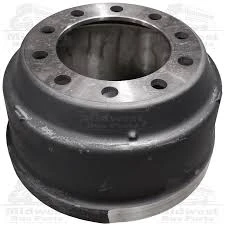
-
 Afrikaans
Afrikaans -
 Albanian
Albanian -
 Amharic
Amharic -
 Arabic
Arabic -
 Armenian
Armenian -
 Azerbaijani
Azerbaijani -
 Basque
Basque -
 Belarusian
Belarusian -
 Bengali
Bengali -
 Bosnian
Bosnian -
 Bulgarian
Bulgarian -
 Catalan
Catalan -
 Cebuano
Cebuano -
 Corsican
Corsican -
 Croatian
Croatian -
 Czech
Czech -
 Danish
Danish -
 Dutch
Dutch -
 English
English -
 Esperanto
Esperanto -
 Estonian
Estonian -
 Finnish
Finnish -
 French
French -
 Frisian
Frisian -
 Galician
Galician -
 Georgian
Georgian -
 German
German -
 Greek
Greek -
 Gujarati
Gujarati -
 Haitian Creole
Haitian Creole -
 hausa
hausa -
 hawaiian
hawaiian -
 Hebrew
Hebrew -
 Hindi
Hindi -
 Miao
Miao -
 Hungarian
Hungarian -
 Icelandic
Icelandic -
 igbo
igbo -
 Indonesian
Indonesian -
 irish
irish -
 Italian
Italian -
 Japanese
Japanese -
 Javanese
Javanese -
 Kannada
Kannada -
 kazakh
kazakh -
 Khmer
Khmer -
 Rwandese
Rwandese -
 Korean
Korean -
 Kurdish
Kurdish -
 Kyrgyz
Kyrgyz -
 Lao
Lao -
 Latin
Latin -
 Latvian
Latvian -
 Lithuanian
Lithuanian -
 Luxembourgish
Luxembourgish -
 Macedonian
Macedonian -
 Malgashi
Malgashi -
 Malay
Malay -
 Malayalam
Malayalam -
 Maltese
Maltese -
 Maori
Maori -
 Marathi
Marathi -
 Mongolian
Mongolian -
 Myanmar
Myanmar -
 Nepali
Nepali -
 Norwegian
Norwegian -
 Norwegian
Norwegian -
 Occitan
Occitan -
 Pashto
Pashto -
 Persian
Persian -
 Polish
Polish -
 Portuguese
Portuguese -
 Punjabi
Punjabi -
 Romanian
Romanian -
 Russian
Russian -
 Samoan
Samoan -
 Scottish Gaelic
Scottish Gaelic -
 Serbian
Serbian -
 Sesotho
Sesotho -
 Shona
Shona -
 Sindhi
Sindhi -
 Sinhala
Sinhala -
 Slovak
Slovak -
 Slovenian
Slovenian -
 Somali
Somali -
 Spanish
Spanish -
 Sundanese
Sundanese -
 Swahili
Swahili -
 Swedish
Swedish -
 Tagalog
Tagalog -
 Tajik
Tajik -
 Tamil
Tamil -
 Tatar
Tatar -
 Telugu
Telugu -
 Thai
Thai -
 Turkish
Turkish -
 Turkmen
Turkmen -
 Ukrainian
Ukrainian -
 Urdu
Urdu -
 Uighur
Uighur -
 Uzbek
Uzbek -
 Vietnamese
Vietnamese -
 Welsh
Welsh -
 Bantu
Bantu -
 Yiddish
Yiddish -
 Yoruba
Yoruba -
 Zulu
Zulu
Hub Motor with Drum Brake - Innovating Electric Vehicles
Hub Motors with Drum Brakes A Comprehensive Overview
In the ever-evolving world of electric vehicles (EVs), the integration of hub motors with drum brakes represents a significant advancement in design and functionality. Hub motors, which are integrated directly into the wheel hub, offer numerous advantages over traditional motor systems. When combined with drum brakes, they create a reliable and efficient braking system that enhances safety and performance.
Hub Motors with Drum Brakes A Comprehensive Overview
Drum brakes, while often considered traditional, offer several advantages in this context. They provide strong and consistent braking performance, especially in wet or adverse conditions. The enclosed design of drum brakes protects the braking components from dirt and debris, thereby enhancing durability and longevity. This makes them an ideal choice for vehicles that may be exposed to harsh environmental conditions, where maintaining optimal braking performance is essential.
hub motor with drum brake

Furthermore, the combination of hub motors and drum brakes can lead to more efficient energy usage. Regenerative braking systems, which are often integrated with electric vehicles, work effectively with hub motors. When the driver applies the brakes, kinetic energy is converted back into electrical energy, which can be stored in the vehicle’s battery. This feature not only extends the vehicle’s range but also reduces wear on traditional braking systems. Drum brakes, being robust and capable of handling high temperatures, complement this feature by delivering consistent braking power without overheating.
However, there are considerations to keep in mind. While drum brakes are durable, they may not dissipate heat as effectively as disc brakes, which can lead to brake fade under extreme conditions. This makes the choice between drum and disc brakes a critical decision for manufacturers, depending on the intended use and performance requirements of the vehicle.
In conclusion, the combination of hub motors with drum brakes presents a compelling option for the future of electric vehicles. Their compact design, energy efficiency, and robust braking capabilities make them a suitable choice for various applications. As the industry continues to innovate, this synergy could play a pivotal role in shaping the next generation of electric mobility solutions, providing users with enhanced performance, safety, and sustainability. The ongoing advancements in this technology are sure to revolutionize the landscape of electric transportation in the years to come.
-
Rear Drum Brakes Maintenance TipsNewsAug.04,2025
-
Key Components Affecting Brake Drum FunctionNewsAug.04,2025
-
Important Inspection for Truck Drum BrakeNewsAug.04,2025
-
How to Prepare for Changing Rear Drum BrakesNewsAug.04,2025
-
Essential Tools for Cleaning Drum Brakes ProperlyNewsAug.04,2025
-
Brake Drum Function GuideNewsAug.04,2025
-
Safety Features of Red Brake DrumsNewsAug.01,2025
